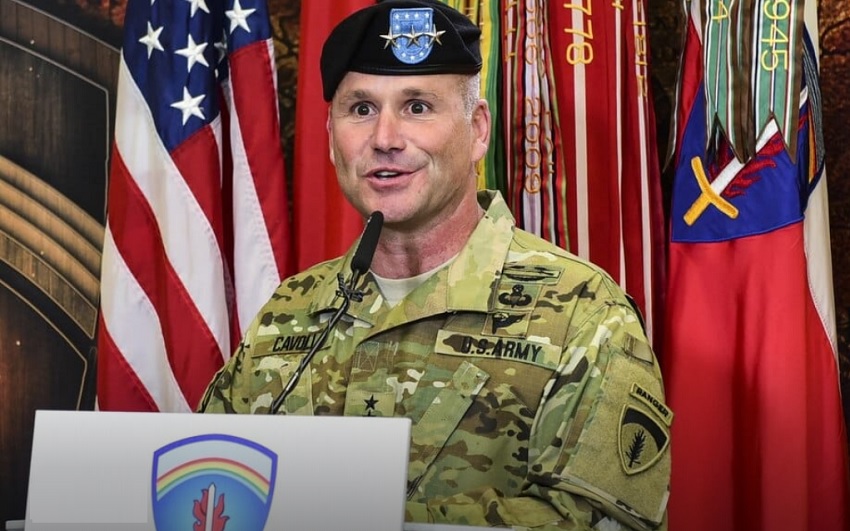The decline of civilian control over America’s military is once again apparent in the surging arms shipments to Ukraine
James Carden / Asia Times
WASHINGTON (June 8, 2022) — In The Best and the Brightest, a still unmatched history of America’s intervention in Vietnam, David Halberstam observed a phenomenon that is alive and well today as Washington policymakers – bit by bit, so as to be almost imperceptible to the public at large – deepen American involvement in the Ukraine war.
Halberstam noted the “particular power” the US military held “with the Hill and with hawkish journalists, their stronger hold on patriotic-machismo arguments…their particular certitude, made them far more powerful players than men raising doubts. The illusion would always be of civilian control; the reality would be of a relentlessly growing military domination of policy, intelligence, aims, objectives and means…”
The capture of the civilian national security apparatus by the Pentagon and intelligence community is by now an old story. The steady decline of civilian control over the military has been a feature of American politics for some years.
During the Barack Obama administration, the president faced fierce resistance to his plans to draw down troop levels in Afghanistan. At the time, the chairman of the House of Representatives Appropriations Committee, David Obey, complained that Generals like Stanley McChrystal were part of “a long list of reckless, renegade generals who haven’t seemed to understand that their role is to implement policy, not design it.”
Obama’s successor’s efforts to wrap up the Afghanistan misadventure were likewise met with obstinance from the military brass. As Axios reported last May, US generals under then-president Donald Trump “fundamentally disagreed with the president’s worldview. They were personally invested in Afghanistan. And several would come to see it as their job to save America and the world from their commander-in-chief.”
Today, reports are emerging of a new military-led full-court press pushing for more and more, but this time in Ukraine.
In a statement released to Politico last Friday, Major General David Baldwin, commanding general of the California National Guard, called for the US and Western allies to begin sending fighter jets to Ukraine “as soon as possible.”
“MiGs are the best immediate solution to support the Ukrainians, but US or Western fighters are options that should be explored as soon as possible,” Baldwin told Politico.

General Christopher Cavoli
Meantime, the May 26 testimony of General Christopher Cavoli before the Senate Armed Services Committee (SASC) seemed to indicate that the military’s appetite is growing for ever more resources to fight what is portrayed as a metastasizing Russian threat.
Cavoli, slated to be the next Supreme Allied Commander of US Army Europe, laid out his strategy for Ukraine in a prepared statement saying:
“Successful strategic competition with Russia requires a multi-domain, global, whole-of-government approach…Our Joint Force must be able to deter further Russian aggression, to improve its ability to deploy rapidly, and to effectively interoperate with Allies and Partners in contested environments.
“Enhanced capabilities and capacities are needed to compete and win across multiple domains. Our Joint Force must be prepared to counter threats posed by rapid technological advancements such as advanced chemical, biological, radiological and nuclear (CBRN) threats, quantum computing, artificial intelligence, robotics, directed energy, and hypersonic.”
All the while, a veritable flood of weapons continues to enter Ukraine from the West, which has all the potential of making Ukraine into a kind of ‘West Chechnya.’
In just the last week, reports have surfaced that the Biden administration is in the process of sending to Ukraine four MQ-1C Gray Eagle drones that can be armed with Hellfire missiles; High Mobility Artillery Rocket Systems (HIMARS) that depending on their positioning could potentially hit targets inside Russia; long-range M270 multiple-rocket launchers (MLRS); and M109 self-propelled howitzers.
Bit by bit, day by day, the US becomes more and more enmeshed in a mess that has precious little to do with actual US national security interests. Still worse, the lack of oversight and the sheer number of weapons the US is introducing into the conflict will only undermine and degrade the security of Eastern Europe for years to come.
James W Carden is a former adviser to the US-Russia Bilateral Presidential Commission at the US Department of State. His articles and essays have appeared in a wide variety of publications including The Nation, The American Conservative, Responsible Statecraft, The Spectator, UnHerd, The National Interest, Quartz, The Los Angeles Times and American Affairs.
Posted in accordance with Title 17, Section 107, US Code, for noncommercial, educational purposes.
